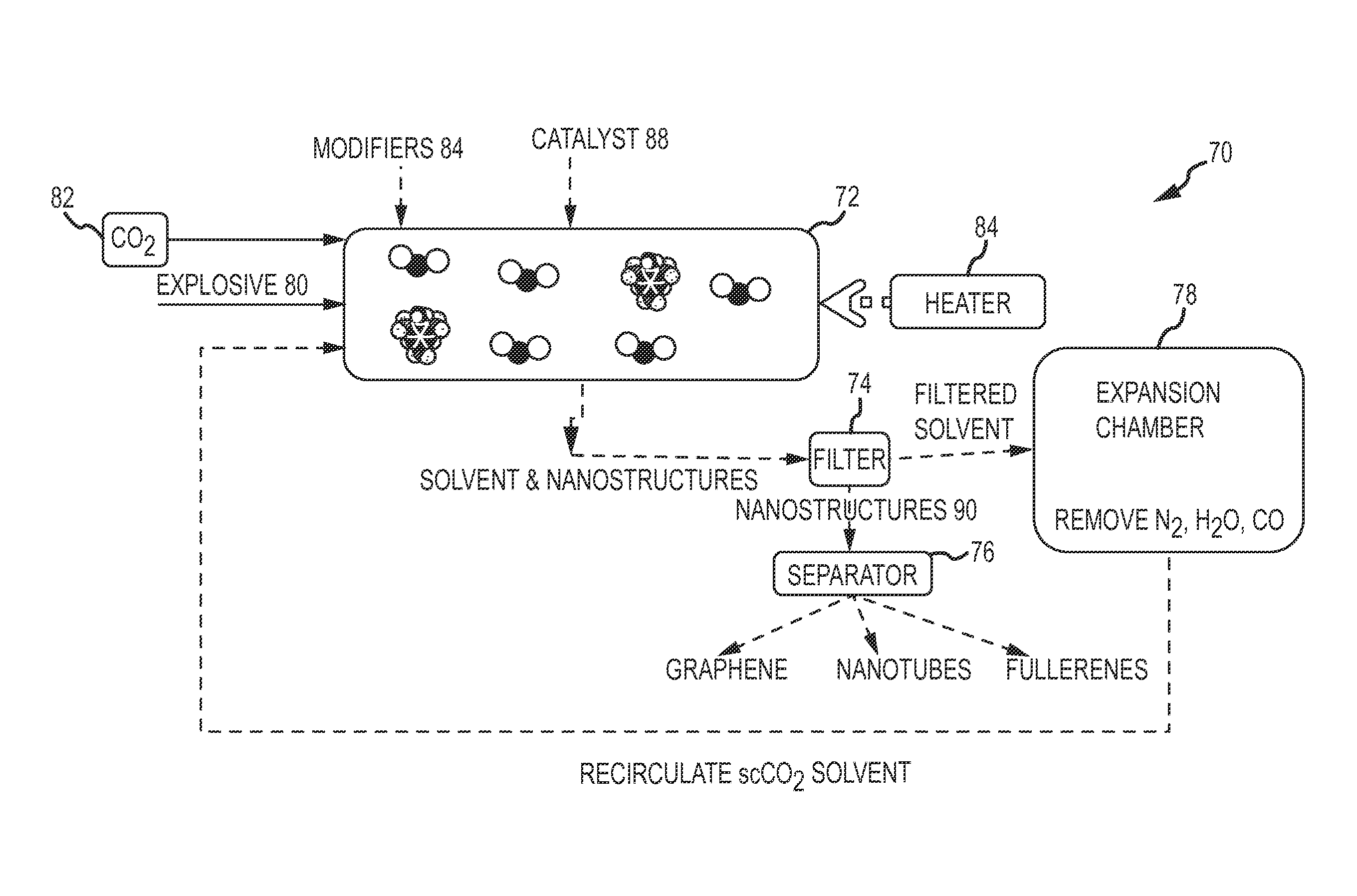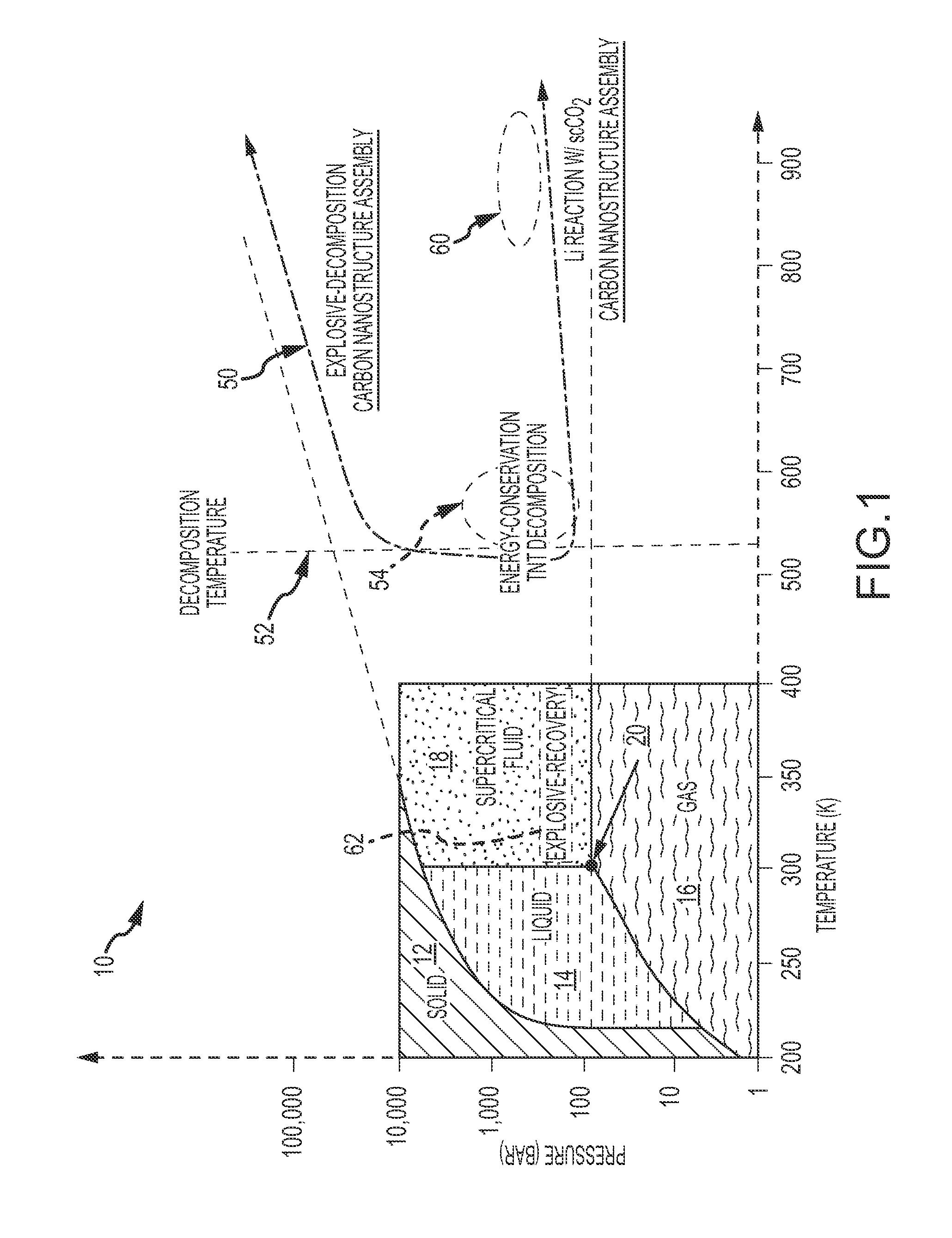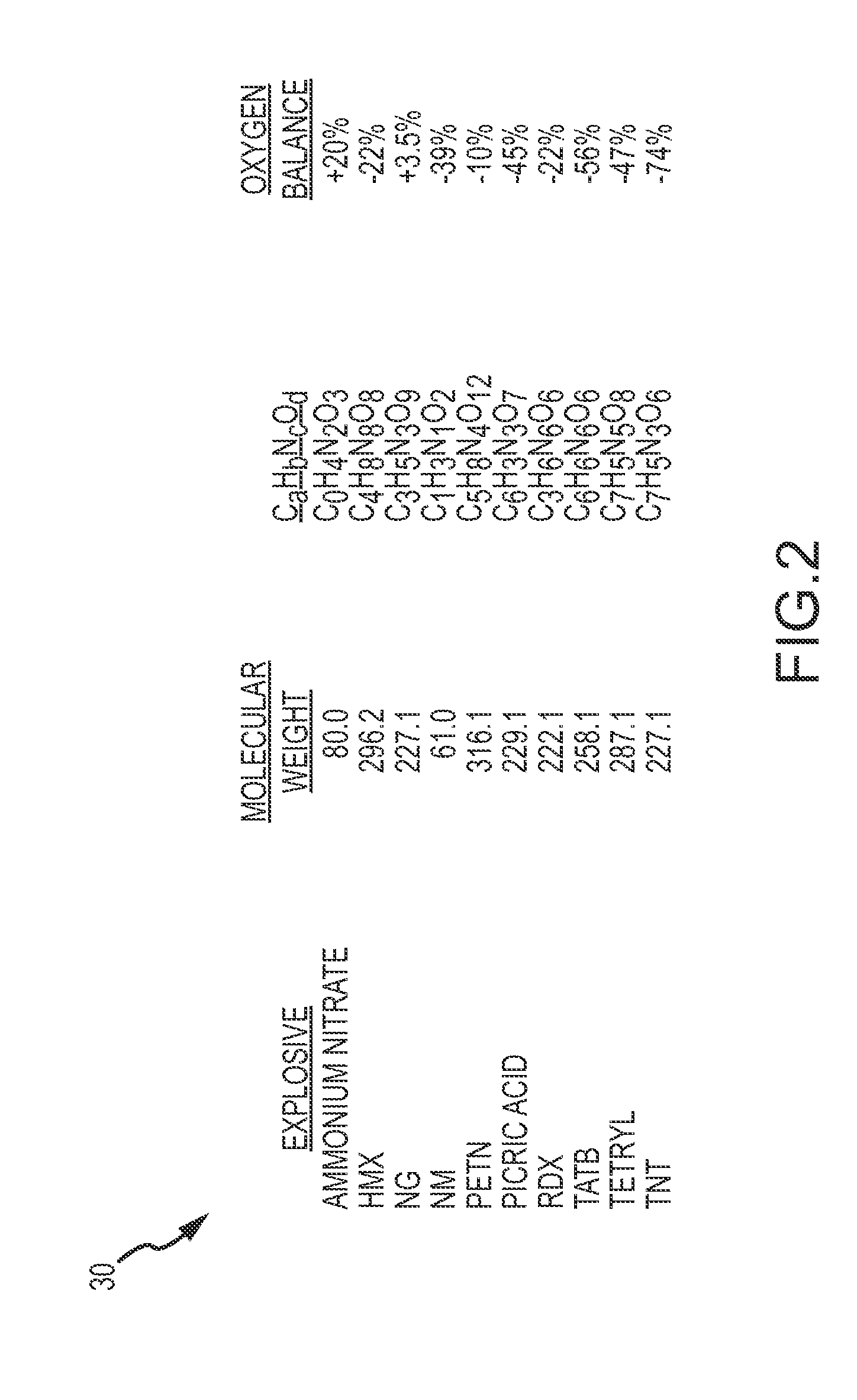Carbon nanostructure synthesis from carbon-excess explosives in supercritical fluid
a supercritical fluid and carbon nanotechnology, applied in the direction of chemistry apparatus and processes, bulk chemical production, fullerenes, etc., can solve the problems of increasing the cost of the process, metal contaminants in the extracted cnts, etc., and achieve the effect of cost-effectiveness
- Summary
- Abstract
- Description
- Claims
- Application Information
AI Technical Summary
Benefits of technology
Problems solved by technology
Method used
Image
Examples
Embodiment Construction
[0024]The ability to safely dissolve bulk explosives in scCO2 has been demonstrated. The scCO2 serves as an inert buffer to separate the individual explosives molecules. Michael Niehaus et al. “Suitability of modified supercritical carbon dioxide as solvent for polar substances” Propellants, Explosives, Pyrotechnics 22, 176-179 (1997), which is hereby incorporated by reference, demonstrates the use of scCO2 as a solvent for explosives just as PETN and RDX. Niehaus studies the introduction of co-solvents (modifiers) to change the solvent capacity or critical point. Niehaus performed his experiments at 300 bar, 50 degrees C. U.S. Pat. No. 5,953,679 entitled “Method for recover and separation of trinotrotolune by supercritical fluid extraction” issued Sep. 14, 1999), which is hereby incorporated by reference, teaches contacting explosive with scCO2 at a temperature above the melting point of TNT and recovering the TNT. The critical temperature is 31.04 C. Morris operates at temperature...
PUM
| Property | Measurement | Unit |
|---|---|---|
| pressure | aaaaa | aaaaa |
| pressure | aaaaa | aaaaa |
| densities | aaaaa | aaaaa |
Abstract
Description
Claims
Application Information
 Login to View More
Login to View More - R&D
- Intellectual Property
- Life Sciences
- Materials
- Tech Scout
- Unparalleled Data Quality
- Higher Quality Content
- 60% Fewer Hallucinations
Browse by: Latest US Patents, China's latest patents, Technical Efficacy Thesaurus, Application Domain, Technology Topic, Popular Technical Reports.
© 2025 PatSnap. All rights reserved.Legal|Privacy policy|Modern Slavery Act Transparency Statement|Sitemap|About US| Contact US: help@patsnap.com



